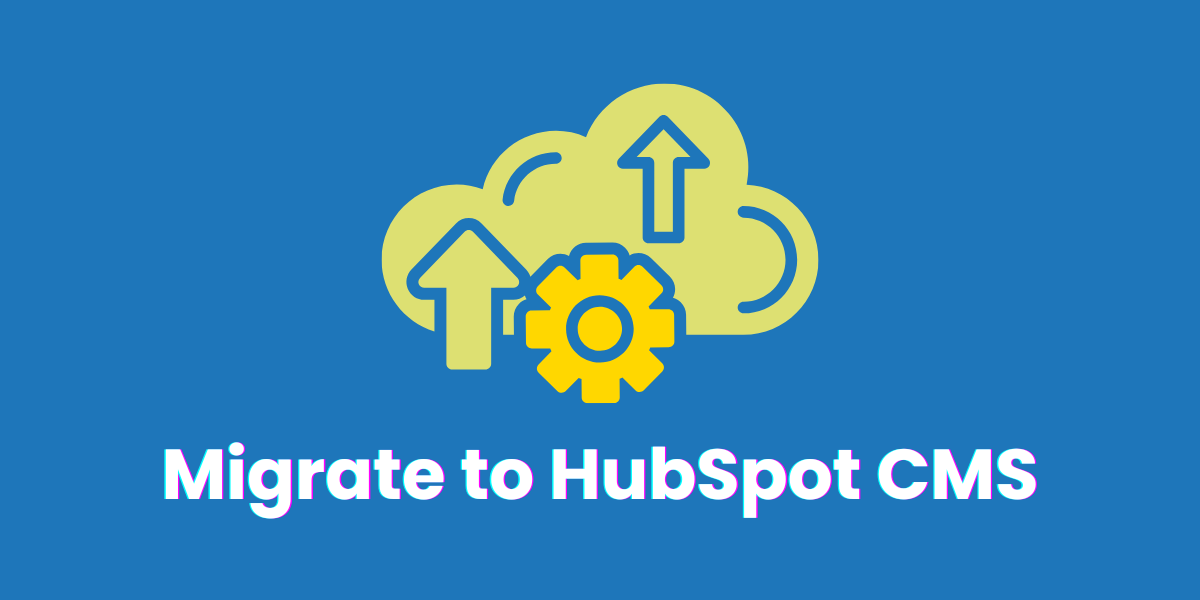HubSpot CMS Migration Without Losing SEO or Performance

How to Migrate Your Website to HubSpot CMS Without Losing SEO or Performance
Migrating your website to a new platform, mainly to HubSpot CMS, is one of the most strategic moves you can make in 2025. But with that move comes an equally significant fear: losing your hard-earned SEO rankings and site performance.
This blog is a comprehensive, easy-to-follow, and SEO-friendly migration guide created especially for IT leaders, SEO managers, and marketing teams. Whether you're moving from WordPress, Wix, Joomla, or a custom CMS, this guide will ensure zero SEO damage, no traffic loss, and maximum performance gains on HubSpot CMS.
Why Businesses Are Migrating to HubSpot CMS in 2025

Stat: According to HubSpot’s 2024 CMS Benchmark Report, businesses that migrated to HubSpot CMS saw an average 23% increase in organic traffic and 18% improvement in page load speed within 3 months post-migration.
Understanding the Risks of Poor Website Migration
A careless migration can:
- Tank your SEO rankings overnight
- Causes 404 errors and broken links
- Slow down your website
- Lose precious metadata and structured data
- Kill your page authority and backlinks
- Confuse search engines with duplicated or missing content
But don’t worry, we’ll walk you through how to avoid those pitfalls.
Pre-Migration Checklist: What You Must Do First
1. Audit Your Current Website
- Crawl your website using Screaming Frog or Sitebulb.
- Extract all URLs, meta tags, schema, internal links, and media files.
2. Benchmark SEO Performance
- Record keyword rankings, traffic sources, bounce rate, and site speed.
- Capture Google Analytics, Search Console, and page insights data.
3. Backup Everything
- Export the entire database, file system, media assets, and plugin settings.
4. Review Third-Party Integrations
- Document all external tools: forms, CRMs, analytics, live chat, etc.
5. Create a URL Mapping Strategy
- Use your crawl data to plan redirections and avoid broken links.
6. Identify Content Gaps
- Clean up outdated or duplicated content before migration.
- Optimize underperforming pages for re-publishing on HubSpot.
Step-by-Step Guide to Migrating to HubSpot CMS
Step 1: Set Up Your HubSpot CMS Environment
- Choose HubSpot CMS Hub Professional or Enterprise
- Connect your domain, configure Content Hub, and create your sitemap
Step 2: Rebuild Page Templates and Layouts
- Recreate your design using HubSpot themes, drag-and-drop modules, or HubL
- Preserve UX/UI consistency, brand colors, typography, and layouts
Step 3: Import Website Content
- Use HubSpot migration services or manually move:
- Blog posts (with original dates and tags)
- Landing pages, pillar pages, and media assets
- Embedded forms, CTAs, and inline widgets
Step 4: Implement 301 Redirects
- Prevent link equity loss using HubSpot's redirect manager
- Upload your redirect map for legacy URLs
Step 5: SEO Optimization Before Launch
- Optimize page titles, meta descriptions, image alt text, and structured data
- Use the HubSpot SEO tool to resolve issues and get improvement suggestions
- Submit XML sitemap to Google and Bing
Step 6: QA Testing Before Going Live

Step 7: Go Live and Monitor
- Launch the new website
- Closely monitor traffic, SEO ranking, bounce rates, and user behavior for 30 days.
Post-Migration Performance Optimization
- Use HubSpot’s global CDN and image optimization
- Enable lazy loading and WebP format for images
- Use serverless functions and HubL for dynamic rendering
- Compress scripts and eliminate unused CSS
- Enable blog pagination, content clustering, and structured internal linking.
Best Tools to Use During Migration

Why Inboundsys is the Best Fit for Your HubSpot CMS Migration
At Inboundsys, we are not only a HubSpot Platinum Partner Agency but also experts in delivering smooth, SEO-optimized migrations for businesses worldwide.
Why Choose Inboundsys:
- 12+ Years of HubSpot Expertise: Deep knowledge of HubSpot CMS, CRM, and Marketing Hub.
- Certified Developers & SEO Experts: We blend code with conversion strategy.
- SEO-First Migration: We ensure 100% URL redirection, meta preservation, and zero traffic drop.
- Performance-Driven Designs: Our builds are mobile-optimized, accessible, and fast.
- Custom HubSpot Modules: Get reusable components built specifically for your needs.
- Post-Migration Audit & Optimization: Continuous support after go-live.
Want peace of mind during your CMS migration? Trust the experts at Inboundsys.
Frequently Asked Questions (FAQ)
Will I lose my SEO if I migrate to HubSpot CMS?
Not if done right. You can retain and improve SEO performance with proper 301 redirects, optimized content, and page structure replication.
Does HubSpot CMS support structured data and schema markup?
Yes. You can add JSON-LD directly into your templates or use HubL to render the schema dynamically
What’s the best time to migrate a website?
Preferably during low-traffic periods, often weekends or off-seasons for your industry.
How long does a complete migration take?
Anywhere from 2 to 6 weeks, depending on your site’s size and complexity.
Is HubSpot CMS suitable for large websites?
Absolutely. With HubSpot CMS Enterprise, you get serverless functions, custom objects, membership sites, and advanced performance controls.
Conclusion: Migrate With Confidence
Moving to HubSpot CMS in 2025 is not just a platform shift; it's a strategic business decision that enhances your marketing, simplifies your development process, and safeguards your SEO.
Partnering with Inboundsys ensures your migration is handled by industry experts who understand the technical backend and the front-end user experience.
Ready to migrate your website to HubSpot CMS with zero SEO loss? Get a Free Migration Audit from Inboundsys Today!

Thirumalesh Prasad C G (Thiru) is an entrepreneur, Founder, and CEO of Inboundsys. He has over 22 years of experience working for various multinational IT products and services companies in India and abroad. He was a significant member and worked as a user interface architect, designing the user interface for many web applications and products. In addition to running Inboundsys, he is an advisory board member in various other design studios and digital marketing agencies. He is a passionate blogger who loves writing on digital marketing, inbound marketing, lifestyle, philosophy, positive thinking, and motivation.